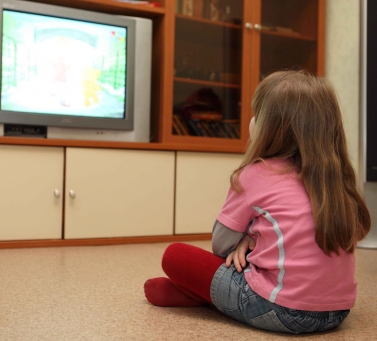
Undoubtedly, the media plays a huge role in people's lives as it is a source of information and means of communication.
Recently, however, the public and scientists noted enhancement of negative impact of media on children (especially the Internet and television). Notably strong influence on young people carries TV. TV becomes a primary source of information for child and adolescent.
The information disseminated by the media, often lies in the stories about bankers, racketeers, killers, top models. The most popular transmissions are the transmissions of entertainment and game shows. They don’t teach to think, feel subtly, they awake baseness, destructiveness, animal origin of man, but not high, moral and spiritual. Analysis of the current information environment showed that the majority of commercial channels show only militants and soft core, interspersed with advertisements. On this the children are brought up today.
Here are some recommendations for parents how to reduce the harmful effects of media on children.
TV
- Take the TV out of the children's room;
- Allow the child to watch only movies and programs that you have seen yourself and consider being useful for their development;
- Set passwords on the TV to access the channels, which can be harmful to the child;
- While watching TV together explain to children the positive and negative examples presented on the screen;
- Give preference to watching Soviet films and cartoons. In determining the educational role of modern paintings use classifications of signs of harmful films and cartoons;
- Make your home video library.
COMPUTER
- Create a separate profile for a child on the computer and set access rights - use Windows «Parental control» for that;
- Determine the time that the child can spend on the computer;
- With the help of software tools monitor the time that a child spends on the computer;
- Once a week, check the history of the child's actions on the computer.
INTERNET
- Install the software (SW), which limits the possibility of visiting sites that are not designed for children;
- Create a list of useful from your point of view sites and record them in a shortcuts line;
- Once a week, check the history of visited pages in the Internet by your child;
- Weekly take time for your child to the joint activities on the Internet with the purpose of training the beneficial use of this resource.
SOCIAL NETWORKS
- Determine the time when the child can go to social networks from your home computer;
- Limit the number of child accounts in social networks with one or two;
- Create your account, "Make friends" with the child in a social network, and once a week from your account page, check for the presence of harmful child photos, posts, phrases (this will allow you to better know the interests of the child: his favorite music, movies, books, and so on);
- Limit the number of publics, which may enter your child, by ten, five of which you pick yourself. This will regulate the "news feed" of the child and fill it with useful content at least by a half;
- Check out the Microsoft recommendations for the safe use of social networks by children.
Phones, tablets
- Once a week, check the cellphone (tablet) of the child for the presence of the installed applications (including games); discuss the need for them, teach your child to maintain order in the phone;
- Lock the phone notifications from social networks, so that the child wouldn’t look for the phone every time someone sends a message or VKontakte and classmates;
- Connect the child service "Children's Internet" to the SIM card to block access to harmful content (Megafon, MTS, Beeline);
- Limit the month traffic through phone or tablet by 1GB (volume of traffic depends on the tariff).
Magazines
- With your child select several periodicals and subscribe to them (or buy regularly);
- Read (or at least look through) the books, magazines, newspapers, which reads your child.
13/06/15
SIGNS OF HARMFUL CARTOON (A NOTE FOR PARENTS)
1. The main characters of the movie are aggressive, cruel, they maim, kill and make harm. Moreover, all the details are "relished", even if everything is filed under the guise of humor.
2. Bad behavior of the characters or the plot remains unpunished, or even lead to the improvement of their lives: getting recognition, popularity, wealth, etc.
3. The story demonstrates the dangerous behavior for health or life in case of repeating it in real life.
4 Character in the cartoon has a behavior not inherent for the gender: male characters behave in a feminine, female – as a man.
5. In the story there are scenes of disrespectful behavior towards people, animals, plants. This can be making a mockery of old age, infirmity, weakness, physical disabilities, social and material inequality.
6. The characters are unsympathetic and even ugly. For the child's perception, for simple orientation in what is "bad" and what is "good", it is necessary that the positive hero was nice and pleasant. Then the child will easier understand to which of the characters he should emulate, and to which on the contrary.
7. A cartoon cultivates an idle life, promotes the ideal of "life as an eternal holiday", policy of avoiding the difficulties and achieving the easiest way, without effort, or even by fraud.
8. A cartoon ridicules or shows from the unsightly side the value of family relationships. The main characters, children are in conflict with their parents, who are shown as silly and ridiculous. Heroes –spouses behave in relation to each other meanly, disrespectfully and without principles. Propagandizing the ideal of individualism and rejection of the veneration of conjugal and family traditions.
9. In the film there are storylines, which denigrate and describing in a contemptuous, disgust way everything connected with maternity, birth and upbringing of children. Maternal images look repulsive and their lifestyle is shown as warped and defective.